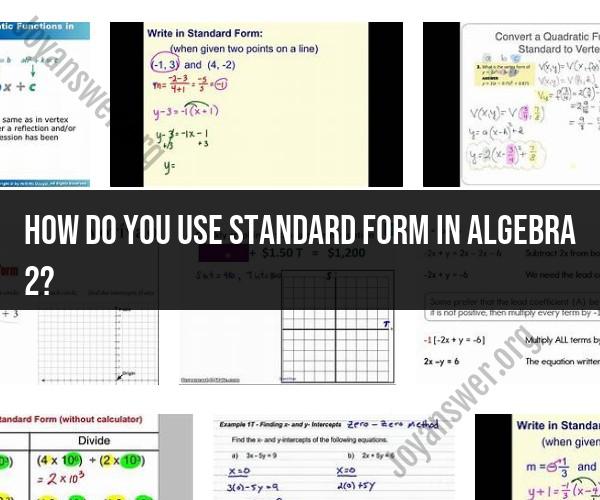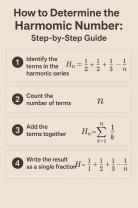How do you use standard form in Algebra 2?
In Algebra 2, standard form typically refers to the standard form of a quadratic equation or the standard form of a linear equation. Here, I'll explain how to use standard form for both types of equations:
1. Standard Form of a Quadratic Equation:The standard form of a quadratic equation is:
Ax^2 + Bx + C = 0
Where A, B, and C are constants, and x represents the variable.
To use standard form for quadratic equations in Algebra 2, you can:
- Solve for the roots (x-intercepts or solutions) by factoring, completing the square, or using the quadratic formula.
- Graph the equation by finding the vertex, axis of symmetry, and direction of the parabola.
- Perform operations such as addition, subtraction, multiplication, or division of quadratic equations to solve complex problems.
For example, if you have a quadratic equation in another form (like vertex form or intercept form), you can convert it to standard form for easier manipulation and solving.
2. Standard Form of a Linear Equation:The standard form of a linear equation is:
Ax + By = C
Where A, B, and C are constants, and x and y represent variables.
To use standard form for linear equations in Algebra 2, you can:
- Write linear equations in standard form if they are not already given in this form.
- Solve systems of linear equations by using methods like substitution, elimination, or matrices.
- Identify the slope and y-intercept when working with linear equations in standard form.
- Graph linear equations by converting them to slope-intercept form (y = mx + b) or by finding the x and y-intercepts.
For example, if you have a linear equation in slope-intercept form (y = mx + b), you can rearrange it into standard form for certain applications or when solving systems of equations.
Using standard form for both quadratic and linear equations in Algebra 2 allows you to work with equations in a standard, consistent format, making it easier to apply various mathematical techniques and solve real-world problems.












